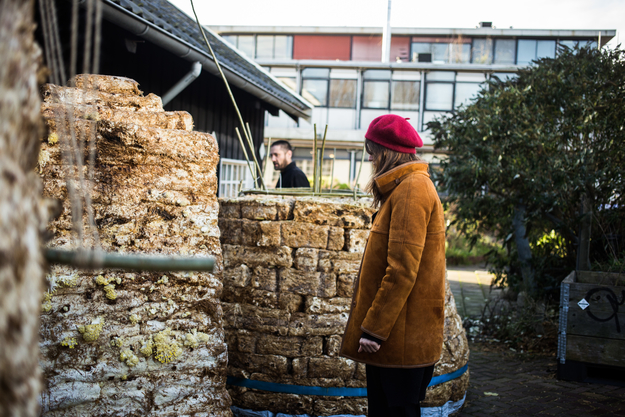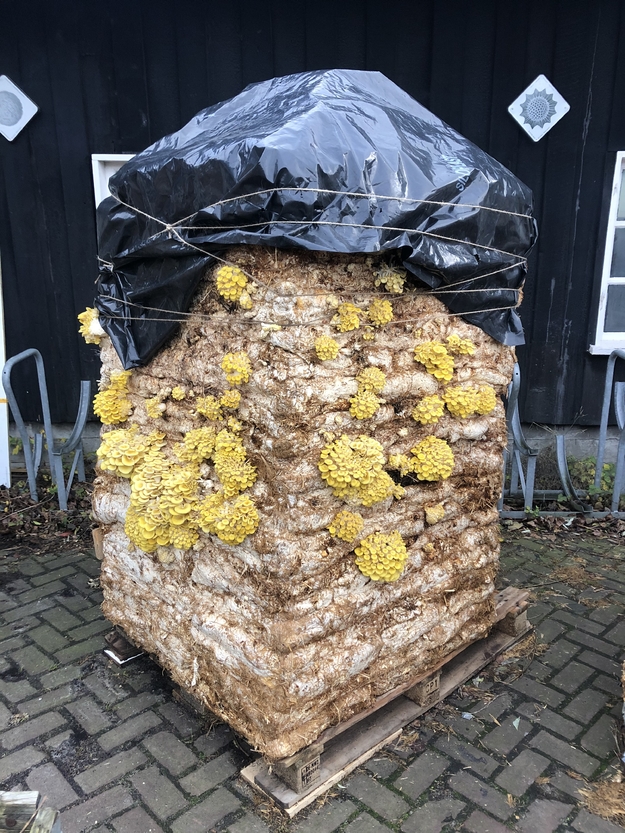Normally mycelium exists in soil, so after a few weeks of 'verticality' it starts to dry out and stops producing mushrooms. A next incarnation in its existence starts to manifests itself. The structures are strong now, and dry, open for other creatures to live within their walls. Eventually, hopefully, feral pigeons will build their nests inside. We create spaces within its walls so they can do so, and have their young. One of the many gifts pigeons share with us is their guano. For centuries pigeon excrement has been a much valued fertiliser in dense population areas. Each pigeon dropping adds value to the mycelium structure for when the next phase of its lifecycle arrives.
By the very nature of their material these pigeon towers are not meant to last forever. Quite the opposite in fact. After one or two years, the towers start to degrade and it is time for the pigeons to move on. The roof is removed from the tower and a composting phase arrives. Weather and microbes are allowed to do their thing and turn, what still looks like a small building, into a composting ruin, and eventually into locally manufactured fertile soil, ready to use in the nearby urban farms and gardens. Here the cycle begins again.
It depends very much on WHEN you look, WHAT you will see. But WHENEVER that is and WHATEVER you see, it is always the myco-assemblage in one of the many different incarnations of itself.
IT does not yet have a name because by its very essence it is in a constant process of one state moving into another. It is a holobiont, a cooperation between species, technology, nature and time. Or something even beyond the holobiont, something that weaves animal, plant, fungi, technology and humanity, as well as various domesticated and rewilded variants of these, into one living and dying system. There is no start, there is no finish, only periods of rest, periods of frantic activity, and moments of transformation.

